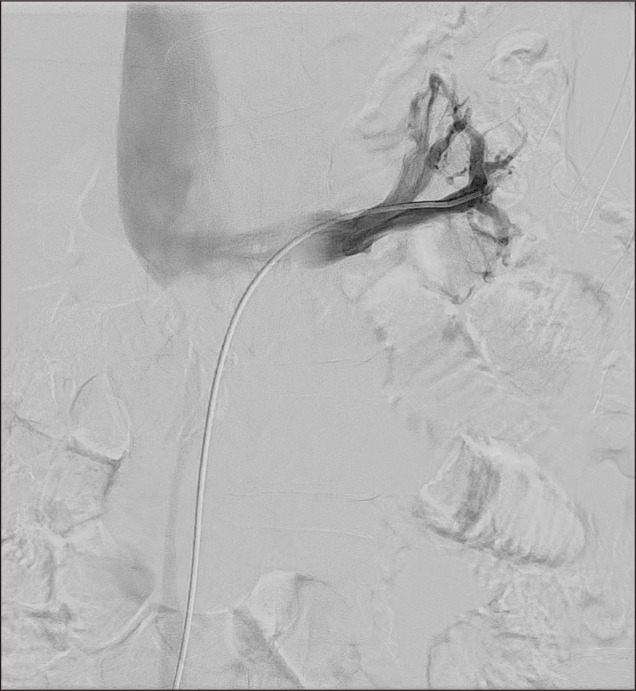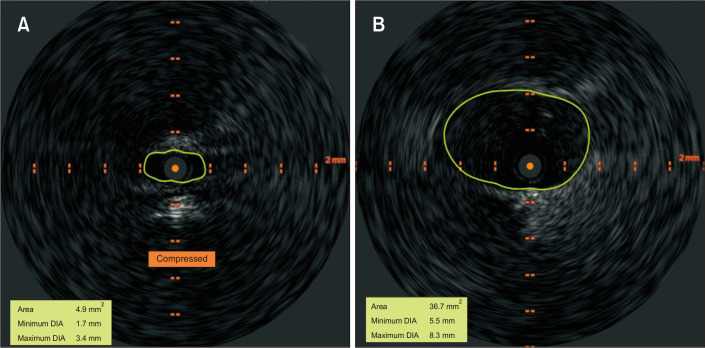一位年轻患者胡桃夹子综合征的多模态评估。
IF 0.8
Q4 PERIPHERAL VASCULAR DISEASE
引用次数: 0
摘要
本文章由计算机程序翻译,如有差异,请以英文原文为准。



Multimodality Assessment of Nutcracker Syndrome in a Young Patient.
A 17-year-old female presented to University Hospital of Heraklion with symptoms of intermittent hematuria and moderate left lumbar pain. She denied a history of trauma and hematological and kidney diseases. She received no regular medications. Laboratory examinations were normal, and the patient underwent computed tomographic angiography (CTA). CTA demonstrated left renal vein (LRV) stenosis between the superior mesenteric artery (SMA) and aorta and post-stenotic LRV dilatation (Fig. 1). Moreover, a significantly reduced aortic-SMA angle was found (15°-20°). These findings suggest the presence of nutcracker syndrome (NCS). However, because of the patient’s young age and possible complications of surgical treatment, further evaluation with selective digital subtraction angiography (DSA) of the LRV was performed through percutaneous right common femoral vein access. However, it did not reveal any significant LRV stenosis (Fig. 2). Intravascular ultrasound (IVUS, Visions PV.035; Philips Volcano) was performed and demonstrated severe luminal narrowing in the proximal LRV (Fig. 3). Moreover, a significant pressure gradient (approximately 6 mmHg) between LRV and inferior Im ge of Vacular Srgery Multimodality Assessment of Nutcracker Syndrome in a Young Patient
求助全文
通过发布文献求助,成功后即可免费获取论文全文。
去求助
来源期刊

Vascular Specialist International
Medicine-Surgery
CiteScore
1.10
自引率
11.10%
发文量
29
审稿时长
17 weeks
 求助内容:
求助内容: 应助结果提醒方式:
应助结果提醒方式:


